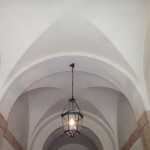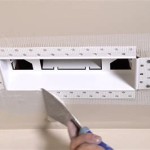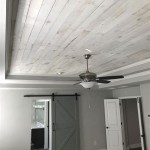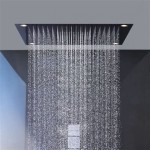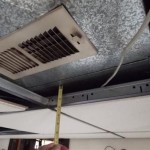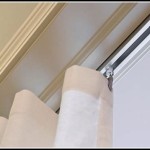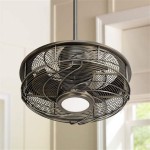Twin Ceiling Fans: The Perfect Solution for Your Home Theater
Creating the ideal home theater environment involves careful consideration of several factors, including acoustics, lighting, and temperature control. While dedicated HVAC systems are often viewed as the premium solution for climate management, they can be costly to install and maintain. A more accessible and efficient alternative, particularly for smaller to medium-sized home theaters, is the strategic implementation of twin ceiling fans. These fans, when correctly selected and positioned, contribute significantly to air circulation, temperature regulation, noise reduction, and even aesthetic appeal, ultimately enhancing the overall viewing experience.
The use of ceiling fans in home theaters is not a novel concept. However, the employment of two fans working in tandem presents unique advantages over single-fan setups. This article will explore the benefits of using twin ceiling fans in a home theater, focusing on their contributions to air circulation and temperature management, noise reduction strategies, and aesthetic integration.
Enhanced Air Circulation and Temperature Management
One of the primary functions of ceiling fans in any space, including a home theater, is to facilitate air circulation. Proper air circulation prevents the formation of stagnant air pockets, leading to a more consistent and comfortable temperature distribution throughout the room. In a home theater, this is particularly important due to the presence of electronic equipment that generates heat, such as projectors, amplifiers, and gaming consoles. If this heat is not effectively dissipated, it can contribute to an uncomfortable viewing environment and potentially impact the performance and lifespan of the electronic devices.
A single ceiling fan can circulate air within a limited radius. However, in larger home theaters, one fan might not be sufficient to reach all areas of the room, leading to uneven temperature distribution. This is where the strategic placement of twin ceiling fans becomes advantageous. By positioning two fans appropriately, the air circulation can be significantly enhanced, ensuring that cool air from an air conditioning system or natural ventilation is distributed evenly throughout the space. This eliminates hot spots and provides a more consistent and comfortable temperature for all occupants.
The direction of rotation of the fan blades also plays a crucial role in temperature management. During warmer months, the fans should be set to rotate counter-clockwise, which creates a downward draft, pushing cool air towards the floor and creating a refreshing breeze. Conversely, during cooler months, the fans should be set to rotate clockwise at a low speed. This upward draft pulls warm air that has risen to the ceiling back down into the room, helping to equalize the temperature and reduce the need for excessive heating. The ability to adjust the fan direction seasonally offers a flexible and energy-efficient approach to temperature regulation.
Furthermore, the strategic use of twin ceiling fans can reduce the reliance on air conditioning, particularly during marginally warm days. By efficiently circulating air, the fans create a perceived cooling effect, allowing the thermostat to be set at a slightly higher temperature without sacrificing comfort. This translates directly into energy savings and a lower environmental impact. The combined effect of even temperature distribution and reduced air conditioning usage makes twin ceiling fans a cost-effective and environmentally responsible solution for home theater climate control.
Mitigating Noise Factors
Ambient noise can significantly detract from the immersive experience of a home theater. External sounds, such as traffic or neighbors, are often addressed through soundproofing measures in walls, ceilings, and floors. However, internal noise sources, such as the hum of electronic equipment or the operation of HVAC systems, can be equally disruptive. While ceiling fans are generally designed for quiet operation, some models can produce noticeable noise that could interfere with the audio quality of the home theater.
Choosing the right type of ceiling fan is crucial for minimizing noise. Fans with DC motors are significantly quieter than those with AC motors. DC motors offer smoother and more efficient operation, resulting in less vibration and noise. Furthermore, selecting fans with well-balanced blades and secure mounting hardware is essential to prevent wobbling and rattling, which can generate unwanted noise.
Fan speed also impacts noise levels. Higher fan speeds generally produce more noise. Therefore, it is advisable to use the lowest fan speed necessary to achieve the desired level of air circulation. In some cases, switching between fan directions to optimize air circulation might prove more effective than simply increasing fan speed.
The presence of two fans might intuitively suggest an increase in noise compared to a single fan. However, when selected and installed correctly, twin ceiling fans can actually contribute to noise reduction in a home theater. With adequate air circulation, it allows to lower the primary HVAC system, thus reducing the noise produced by the system. In turn, the fans are contributing to create a quieter environment because they are enabling you to lower the power or completely turn off any primary HVAC system.
Another way twin fans can help reduce noise is through targeted air movement. By strategically positioning the fans, air can be directed away from sensitive microphones or acoustic panels, preventing turbulence and minimizing unwanted sound reflections. This is particularly beneficial when recording audio or calibrating the sound system.
Aesthetic Integration and Design Considerations
While functionality is paramount in a home theater, aesthetics also play a significant role in creating an immersive and enjoyable experience. Ceiling fans should be selected not only for their performance but also for their visual appeal and ability to integrate seamlessly with the overall design of the room.
Ceiling fans are available in a wide range of styles, finishes, and blade designs. To match the home theater decor, one should consider fans with sleek, modern designs, or more traditional styles with ornate details. The color and finish of the fan should complement the walls, ceiling, and furniture in the room. For example, a home theater with dark walls and a minimalist design might benefit from fans with a matte black finish and clean lines.
The size of the fan blades should be proportional to the size of the room. A general guideline is that larger rooms require fans with longer blades to effectively circulate air. However, the height of the ceiling should also be considered. In rooms with low ceilings, flush-mount fans or fans with shorter downrods can be used to maximize headroom.
Lighting is another important consideration. Many ceiling fans come with integrated light fixtures. If additional lighting is needed in the home theater, a fan with a built-in light can be a convenient and space-saving option. However, it is crucial to select a light fixture that provides adequate illumination without being too bright or distracting. Dimmable lights are particularly useful, as they allow the brightness to be adjusted to suit the viewing environment.
The placement of the fans should be carefully considered to optimize both air circulation and visual appeal. The fans should be positioned to avoid obstructing the view of the screen or interfering with the sound system. In general, it is recommended to place one fan in the center of the room and another towards the back or sides, depending on the room's dimensions and seating arrangement.
Remote control functionality is also an important factor. A remote control allows to adjust the fan speed, direction, and light settings without having to get up from the seat. Some fans also come with smart features that allow them to be controlled via a smartphone app or integrated with a smart home system. These features add convenience and enhance the overall user experience.
Ultimately, the goal is to select ceiling fans that not only provide optimal performance but also seamlessly integrate with the overall aesthetic of the home theater, contributing to a cohesive and immersive viewing environment.

Wiring Two Ceiling Fans On One Switch Cali Coast Electric

Upgrade Your Airflow 3 Ways To Smarten Ceiling Fans Wirecutter

Harbor Breeze Twin Ii 74 In Oil Rubbed Broe With Brown Wicker Blades Indoor Outdoor Ceiling Fan Light 6 Blade L0982 At Com

Harbor Breeze Twin Ii 74 In Oil Rubbed Broe With Brown Wicker Blades Indoor Outdoor Ceiling Fan Light 6 Blade L0982 At Com

Ceiling Fan Guide Learn About Diffe Types How To Choose The Right One And Top 6 Picks For Your Home Hindustan Times

Harbor Breeze Twin Ii 74 In Oil Rubbed Broe With Brown Wicker Blades Indoor Outdoor Ceiling Fan Light 6 Blade L0982 At Com

Control Your Ceiling Fan Sd At Convenience With The Best Remote Fans On In 2025 Hindustan Times

Top 5 Features To Look For In A Home Theater World Wide Stereo
Creating A Home Cinema Room 2 Things To Consider Acoustic Pixel Audio Visual Smart

Best Home Theater Systems Of 2024 The Master Switch
Related Posts

